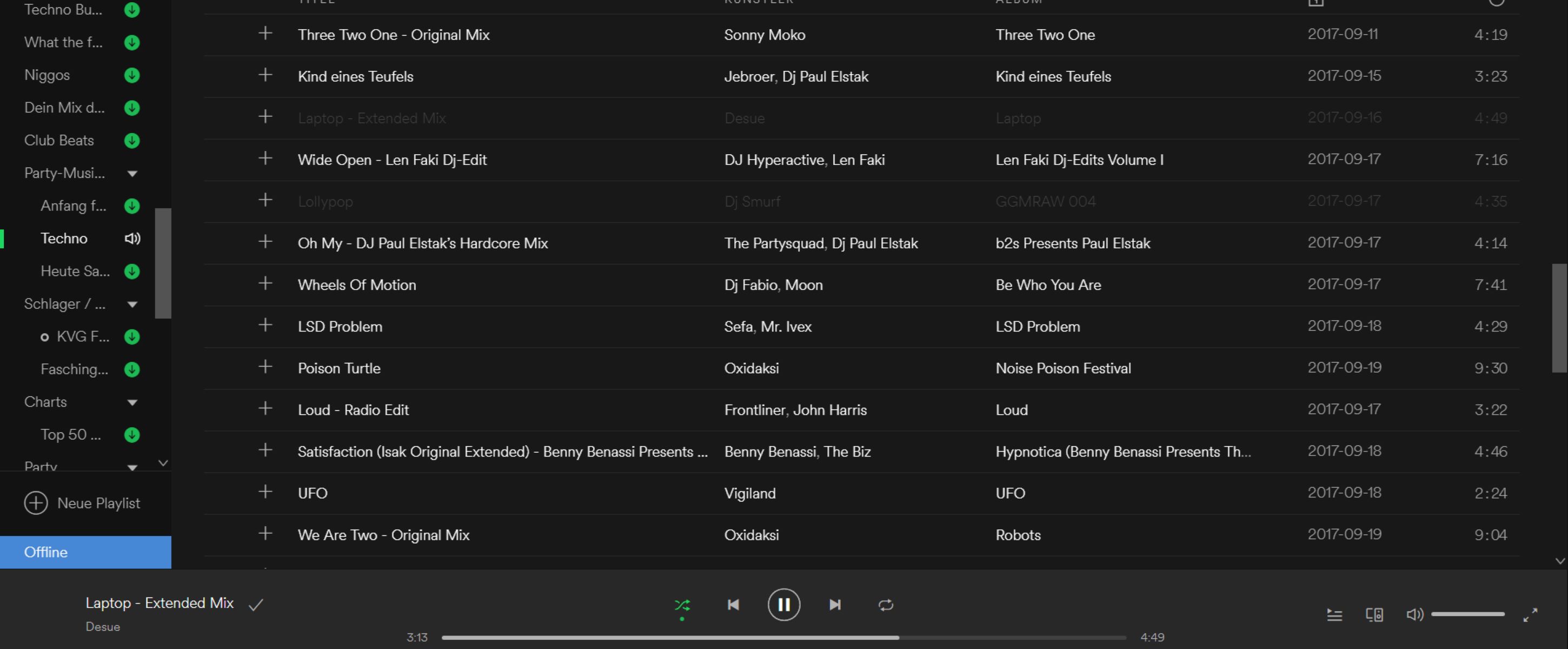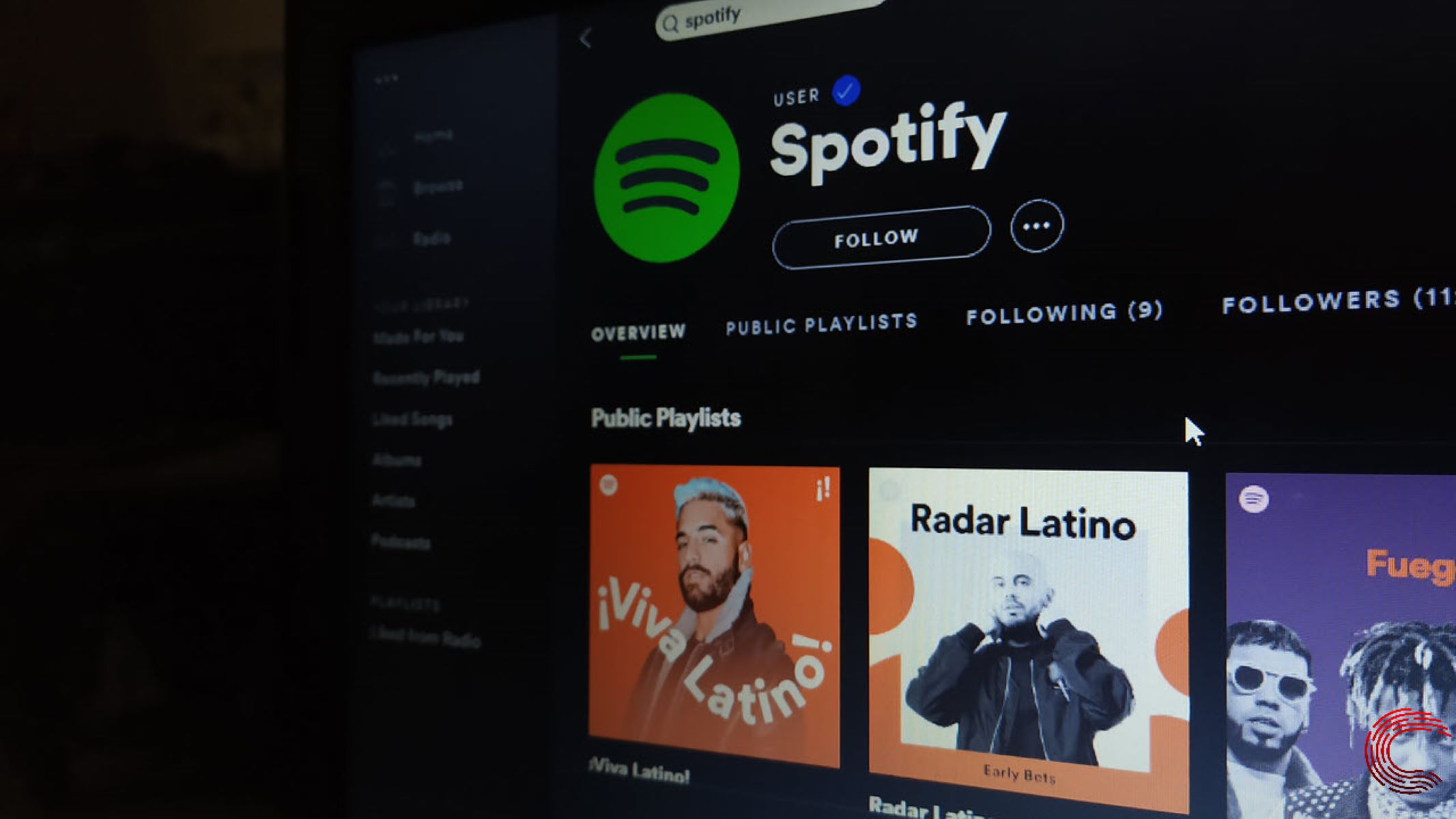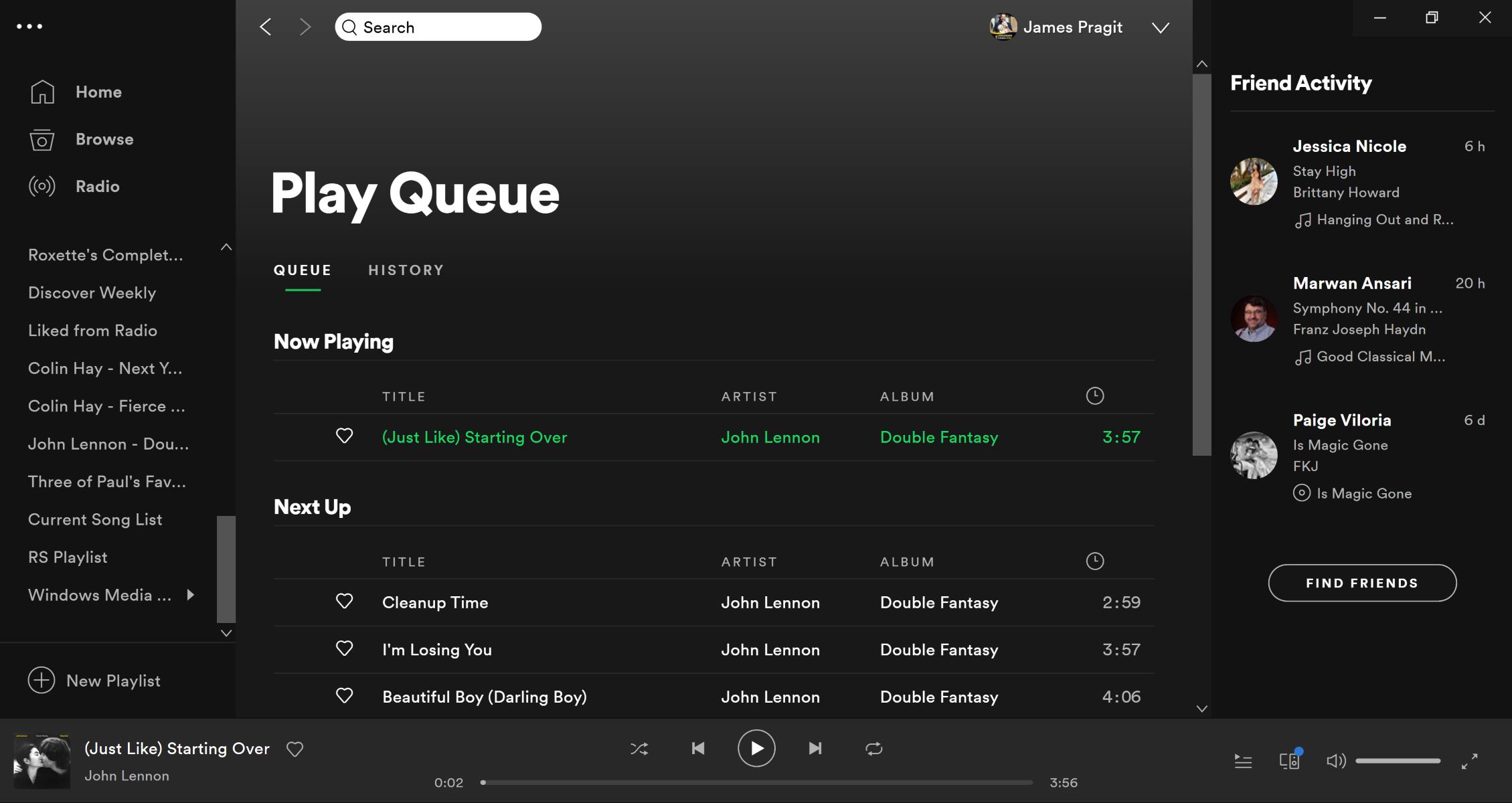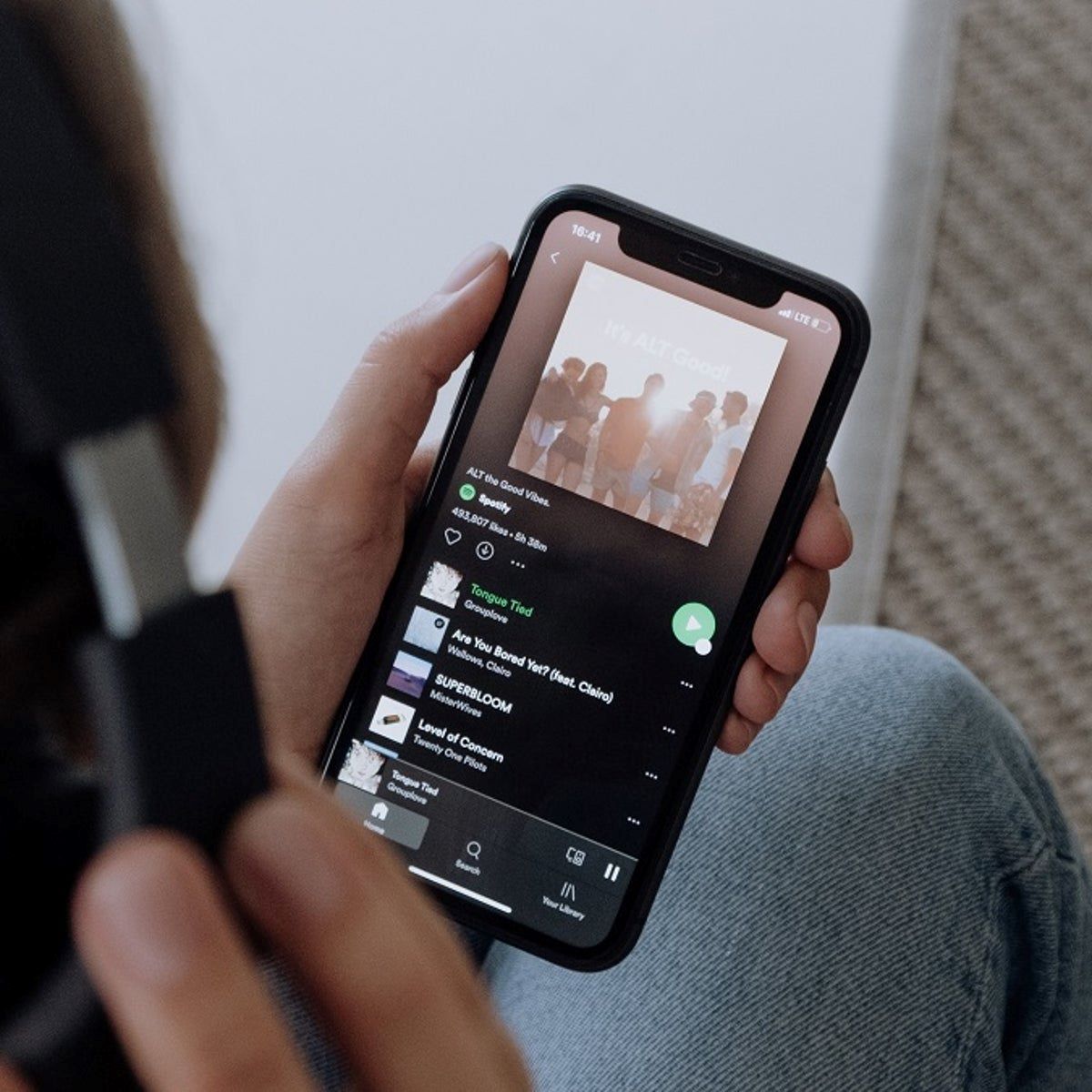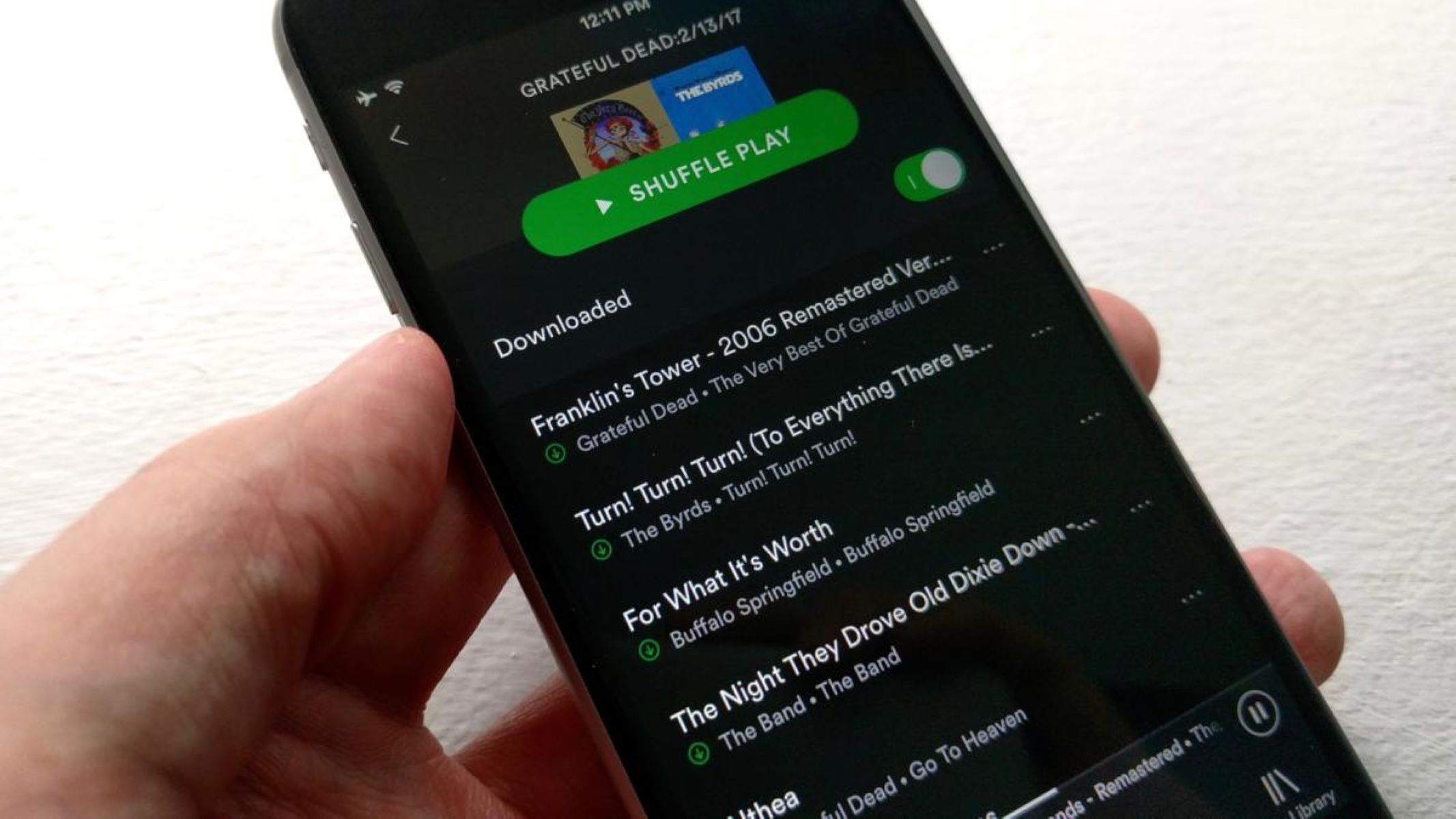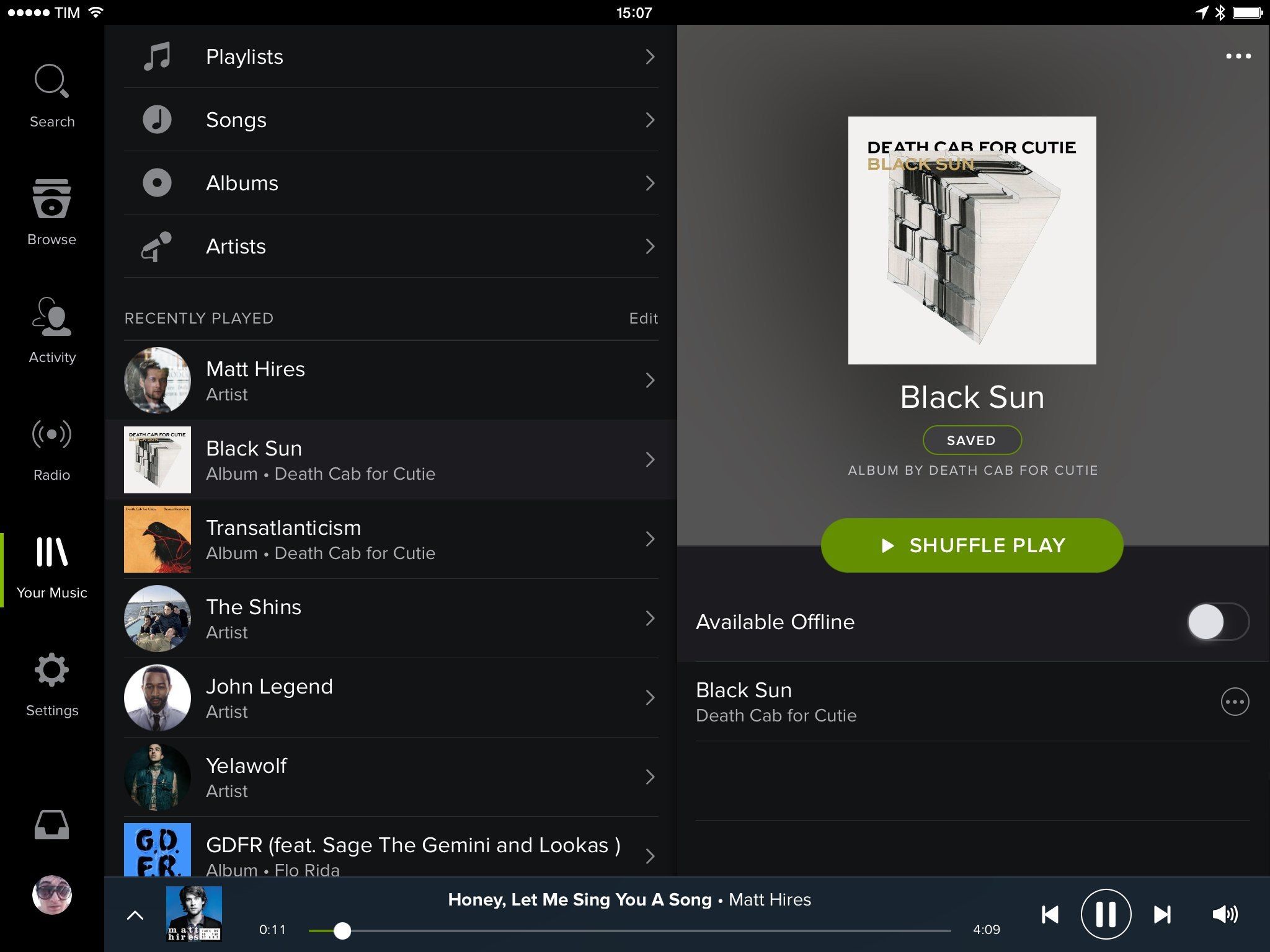Introduction
Spotify, one of the world’s most popular music streaming platforms, has become an essential tool for music lovers everywhere. With millions of songs available at the click of a button, it provides endless hours of entertainment and discovery. However, you may have noticed that some songs suddenly disappear from your playlists or search results, leaving you puzzled and wondering why.
When it comes to the removal of songs from Spotify, there are several factors at play. Understanding why these removals occur can help shed light on the complexities of the music industry and the challenges streaming platforms face in providing a vast and diverse music catalog to their users.
From licensing agreements and limited availability to copyright infringements and label requests, there are various reasons why Spotify removes songs. In this article, we will delve into these reasons and explore the intricacies behind the removal of songs from the platform.
It’s important to note that Spotify’s decision to remove songs is not arbitrary. Instead, it is influenced by a variety of factors, including legal requirements, artist preferences, and platform improvements to ensure the best possible experience for its users. Understanding these factors can give us a comprehensive perspective on why certain songs may no longer be available on Spotify.
Licensing Agreements
Licensing agreements play a vital role in determining which songs are available on music streaming platforms like Spotify. These agreements are contracts between Spotify and record labels, music publishers, and artists, granting Spotify the right to stream their copyrighted content. However, the terms of these agreements can vary widely, leading to the removal of certain songs from the platform.
One common reason for song removal is the expiration or termination of licensing agreements. These agreements typically have a set duration, and when they expire, Spotify may need to renegotiate the terms with the rights holders. During this negotiation period, the song in question may be temporarily removed until a new agreement is reached.
Furthermore, licensing agreements can also be specific to certain regions or territories. This means that songs that are available in one country may not be available in another. This geo-restriction is often due to different licensing agreements in place for different markets, considering factors such as regional popularity, demand, and legal restrictions.
Another aspect of licensing agreements is the issue of exclusive rights. In some cases, artists or labels may grant exclusivity to another streaming platform, making their music unavailable on Spotify. This strategy is often used as a way to drive traffic and subscriptions to a particular platform or service.
It is worth noting that licensing agreements are complex and involve negotiations between multiple parties. The intricacies of these agreements can lead to the removal of songs from Spotify, as the platform strives to comply with the terms and conditions set forth in these contracts.
Limited Availability
Another reason why certain songs are removed from Spotify is due to limited availability. This means that the rights holders, such as artists or record labels, choose to make their music available for a limited time or in specific regions.
Artists may opt for limited availability as a marketing strategy to create hype and exclusivity around their music. By releasing songs for a limited time, artists can generate excitement among their fan base and encourage them to listen or purchase the music before it is no longer available.
Additionally, some artists or labels may choose to restrict the availability of their music in certain regions for various reasons. This could be due to differences in licensing agreements, cultural considerations, or targeting specific markets for promotional purposes.
In some cases, limited availability can also be a result of sample clearance issues. When a song contains samples from other copyrighted works, the rights holders of those samples may impose restrictions on their usage. If the necessary clearances are not obtained, Spotify may have to remove the song to comply with copyright laws.
Furthermore, limited availability can also be influenced by licensing disputes or disagreements between Spotify and rights holders. These disputes may result in the temporary removal of songs until the issues are resolved through negotiations or legal proceedings.
Overall, limited availability is a factor that can lead to the removal of songs from Spotify. The decisions made by artists, labels, and rights holders regarding the availability and accessibility of their music can affect its presence on the platform.
Copyright Infringements
Copyright infringements are a serious concern for music streaming platforms like Spotify. In order to protect the intellectual property rights of artists and creators, Spotify actively monitors its catalog for any potential copyright infringements. When a copyright infringement claim is made, Spotify takes swift action to remove the infringing content.
Sometimes, songs are mistakenly added to the Spotify catalog without proper authorization or licensing. This can occur due to errors in data management, mislabeling, or technical glitches. When copyright holders discover these unauthorized uploads, they can file a claim, resulting in the removal of the infringing song from Spotify.
Unauthorized uploads can also occur when users attempt to upload their own versions of copyrighted songs without obtaining the necessary licenses. While Spotify has mechanisms in place to prevent unauthorized uploads, it is impossible to catch every instance. When copyright holders become aware of these infringements, they can request the removal of the unauthorized content.
In addition, Spotify has implemented a “notice and takedown” policy to address copyright infringement claims. When a copyright holder submits a valid takedown notice, Spotify removes the infringing content to comply with copyright laws and protect the rights of artists and creators.
It is worth noting that copyright infringement claims can sometimes be complex and require a thorough investigation to determine their validity. While Spotify strives to maintain a vast and diverse music catalog, it also prioritizes the protection of artists’ rights and compliance with copyright laws.
By promptly addressing copyright infringement claims and taking appropriate action, Spotify aims to provide a platform that respects and upholds the intellectual property rights of artists and creators.
Sample Clearance Issues
Sample clearance is a crucial aspect of music production, especially when it comes to incorporating portions of pre-existing songs into new compositions. However, complications can arise during the process of obtaining proper clearance for samples used in songs available on Spotify. These clearance issues can lead to the removal of songs from the platform.
When artists or producers sample copyrighted material without obtaining the necessary licenses or permissions, they risk infringing upon the rights of the original copyright holders. In such cases, the copyright holders have the right to file copyright infringement claims, resulting in the removal of the song from Spotify.
The process of sample clearance involves reaching out to the relevant rights holders and obtaining their permission, usually in the form of a license, to use the sampled material. This ensures that the original copyright holders are properly credited and compensated for the use of their work.
However, sample clearance can be a complex and time-consuming process, especially when dealing with multiple copyright holders or obscure samples. As a result, some artists may choose not to clear the samples and release the song anyway, leading to potential copyright issues and subsequent removal from Spotify.
In some cases, the rights holders may refuse to grant sample clearance, either due to financial reasons or concerns over artistic integrity. This can occur when the desired sample use is deemed inappropriate or infringes upon the original work’s integrity.
Furthermore, sample clearance issues may also arise from misunderstandings or miscommunications between the parties involved. Errors in licensing agreements or issues with documentation can lead to disputes and, ultimately, the removal of songs from Spotify until the sample clearance is appropriately resolved.
It is important to note that Spotify takes sample clearance issues seriously and strives to provide a platform that respects copyright laws. By removing songs that involve unlicensed samples, Spotify aims to protect the rights of copyright holders while maintaining a legal and ethical environment for artists and creators.
Lack of Demand
While Spotify aims to provide a vast library of music to its users, not every song may resonate with listeners or generate enough demand to justify its continued availability on the platform. In some cases, songs are removed from Spotify due to a lack of demand.
Music streaming platforms like Spotify rely on user engagement and consumption patterns to determine which songs remain accessible to listeners. If a song consistently receives low streams, skips, or fails to gain traction on playlists and charts, it may be considered as having a lack of demand.
The decision to remove songs with a lack of demand is not solely made by Spotify. Artists, labels, and rights holders may also choose to remove their own content if they believe it is not meeting their expectations or generating sufficient interest.
Additionally, songs that are deemed outdated or no longer relevant may be removed to make room for new releases and fresher content. As the music industry constantly evolves, Spotify aims to provide its users with the most current and popular songs.
It is also worth noting that licensing agreements can play a role in the removal of songs with a lack of demand. If the agreement between Spotify and the rights holders includes a clause specifying the removal of songs that do not meet certain performance metrics, Spotify may be obligated to remove them from its catalog.
Ultimately, the removal of songs due to a lack of demand is a result of various factors, including user engagement, artist perception, and industry trends. Spotify seeks to curate a dynamic and engaging music library that caters to the preferences of its vast user base.
Label or Artist Requests
Label or artist requests can also influence the removal of songs from Spotify. Artists and labels have the right to control the availability and distribution of their music, and they may choose to request the removal of certain songs from the platform.
There can be various reasons why artists or labels request the removal of their songs from Spotify. One common reason is the desire to re-release or repackage the content with updated versions, remixes, or additional features. In such cases, the original version of the song may be removed temporarily until the new version is ready for release.
Artists or labels may also request the removal of songs that they deem no longer representative of their current artistic direction or image. As artists evolve and grow, they may opt to remove songs that no longer align with their creative vision or brand identity.
Furthermore, label or artist requests can also be influenced by contractual agreements or exclusivity deals with other streaming platforms or record labels. If an artist or label signs an exclusive agreement with another platform, they may need to remove their content from Spotify in order to comply with the terms of that agreement.
Artists and labels may also request the removal of songs for personal reasons or as a response to controversies or public issues surrounding the song or its content. In such cases, the removal is often done to protect the artist’s reputation or to distance themselves from any negative associations.
It’s important to understand that the removal of songs due to label or artist requests is ultimately a decision made by the rights holders themselves. While Spotify aims to provide a comprehensive music library, it also respects the wishes of artists and labels to control the availability and presentation of their own music.
Platform Updates and Improvements
Spotify is constantly evolving and improving its platform to enhance user experience and offer new features. As part of these updates, certain songs may be temporarily removed from Spotify.
One reason for the removal of songs during platform updates is to ensure compatibility with new technologies and software upgrades. Occasionally, songs may need to be re-encoded or re-tagged to comply with updated encoding standards or metadata requirements. During this process, the songs may be temporarily unavailable on Spotify.
Additionally, Spotify may introduce new features or functionalities that require adjustments to the music catalog. For example, when introducing personalized playlists or algorithm-based recommendations, Spotify may need to reorganize its music library to improve the accuracy and relevance of these features. As a result, some songs may temporarily be removed for this purpose.
Moreover, platform updates can include improvements to the overall performance, stability, and security of Spotify. During these updates, songs may be temporarily removed to facilitate the smooth implementation of these improvements.
It’s important to note that the removal of songs during platform updates is typically a temporary measure. Once the updates and improvements are completed, the songs are usually reinstated on Spotify, often with improved metadata, audio quality, or accessibility.
Spotify continually strives to provide the best possible music streaming experience for its users, and platform updates and improvements are integral to achieving this goal. The temporary removal of songs during these updates is a necessary aspect of ensuring a seamless and enhanced user experience.
Mislabeling or Incorrect Information
In the fast-paced world of music streaming, errors can occur when it comes to accurately labeling and presenting songs on platforms like Spotify. Mislabeling or incorrect information can lead to confusion among users and may result in the removal of songs from the platform.
One common issue is mislabeled songs, where the title, artist, or metadata associated with a song is incorrect. This can happen due to human error during the data entry process or technical glitches in the system. If users or rights holders identify such errors, they may request the removal of the mislabeled song until the correct information is updated.
Another aspect is incorrect information regarding rights and licenses. Spotify strives to ensure that all songs on its platform are properly licensed and authorized. However, there can be instances where incorrect information regarding licensing or rights is provided. In such cases, Spotify may need to remove the song temporarily to rectify the incorrect information and ensure legal compliance.
Sometimes, songs may be incorrectly attributed to an artist or label. This can occur due to misattribution, where a song by one artist is mistakenly associated with another. When such errors are identified, Spotify takes corrective measures, which may involve temporarily removing the incorrectly attributed song from the platform.
Additionally, errors in song versions can also lead to song removals. For example, the wrong version of a song, such as a live recording instead of the studio version, may be mistakenly uploaded or labeled. When such discrepancies are brought to Spotify’s attention, the incorrect version may be temporarily removed until the correct version can be provided.
Spotify endeavors to maintain an accurate and reliable music catalog, and the removal of songs due to mislabeling or incorrect information is done to ensure the integrity and quality of the overall user experience. By addressing these issues promptly, Spotify aims to provide an accurate and transparent platform for music discovery and enjoyment.
Expired or Terminated Contracts
Contracts between Spotify and rights holders, such as artists, labels, and distributors, play a crucial role in determining which songs are available on the platform. However, these contracts often have a specific duration, and when they expire or are terminated, songs may be removed from Spotify.
Expired contracts occur when the agreed-upon duration of the licensing agreement between Spotify and the rights holder comes to an end. In such cases, Spotify may need to negotiate a new agreement with the artist or label to continue streaming their music. During this negotiation period, songs may be temporarily removed until a new contract is reached.
Terminated contracts, on the other hand, occur when either party decides to end the agreement before its scheduled expiration. There can be various reasons for contract terminations, such as a breach of contract, financial disputes, or a change in the rights holder’s distribution strategy.
When a contract is terminated, it often results in the removal of the songs associated with that contract from Spotify’s catalog. This is because Spotify can no longer legally stream the songs without an active and valid contract in place.
It’s worth noting that expired or terminated contracts can sometimes be indicative of larger changes within the music industry. For example, an artist or label may choose to shift their focus to a different platform or adopt a new distribution strategy. These changes can influence the availability of their music on Spotify.
While the removal of songs due to expired or terminated contracts may be temporary, it ultimately depends on the negotiations and decisions made by the parties involved. Spotify aims to maintain positive relationships with rights holders and continuously negotiate new agreements to ensure a diverse and captivating music catalog for its users.
Conclusion
The removal of songs from Spotify can occur due to a variety of reasons, reflecting the intricacies of the music industry and the challenges faced by streaming platforms. Licensing agreements, limited availability, copyright infringements, sample clearance issues, lack of demand, label or artist requests, platform updates, mislabeling or incorrect information, and expired or terminated contracts are all factors that can lead to the removal of songs from Spotify’s catalog.
Understanding these reasons and the complexities behind them helps shed light on the decisions made by Spotify and the rights holders involved. Licensing agreements dictate which songs are available, while limited availability can be influenced by marketing strategies, regional restrictions, or sample clearance issues.
Copyright infringements and mislabeling errors require swift action to protect the rights of artists and creators, while lack of demand may result in the removal of songs that fail to resonate with listeners. Label or artist requests, platform updates, and expired or terminated contracts reflect the decisions made by the rights holders and the ever-evolving nature of the music industry.
It is important to note that the removal of songs is often not permanent and can be influenced by ongoing negotiations and changes within the industry. Spotify strives to provide a comprehensive and dynamic music catalog, ensuring the best possible experience for its users while respecting the rights of artists, labels, and copyright holders.
As Spotify continues to develop and grow as a platform, the removal of songs serves as a reminder of the intricate web of legal obligations, artistic choices, and user preferences that shape the availability of music on streaming platforms.









